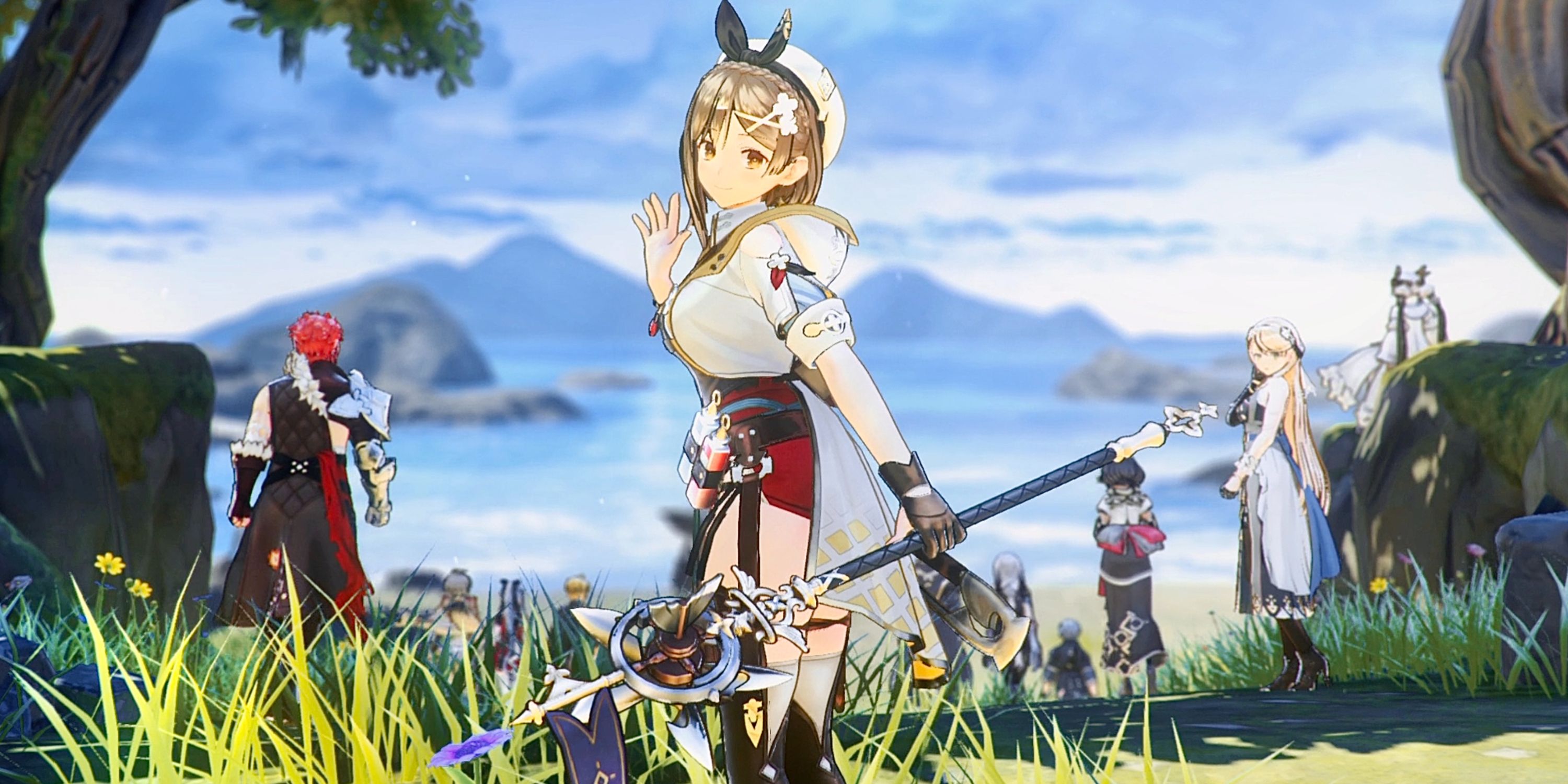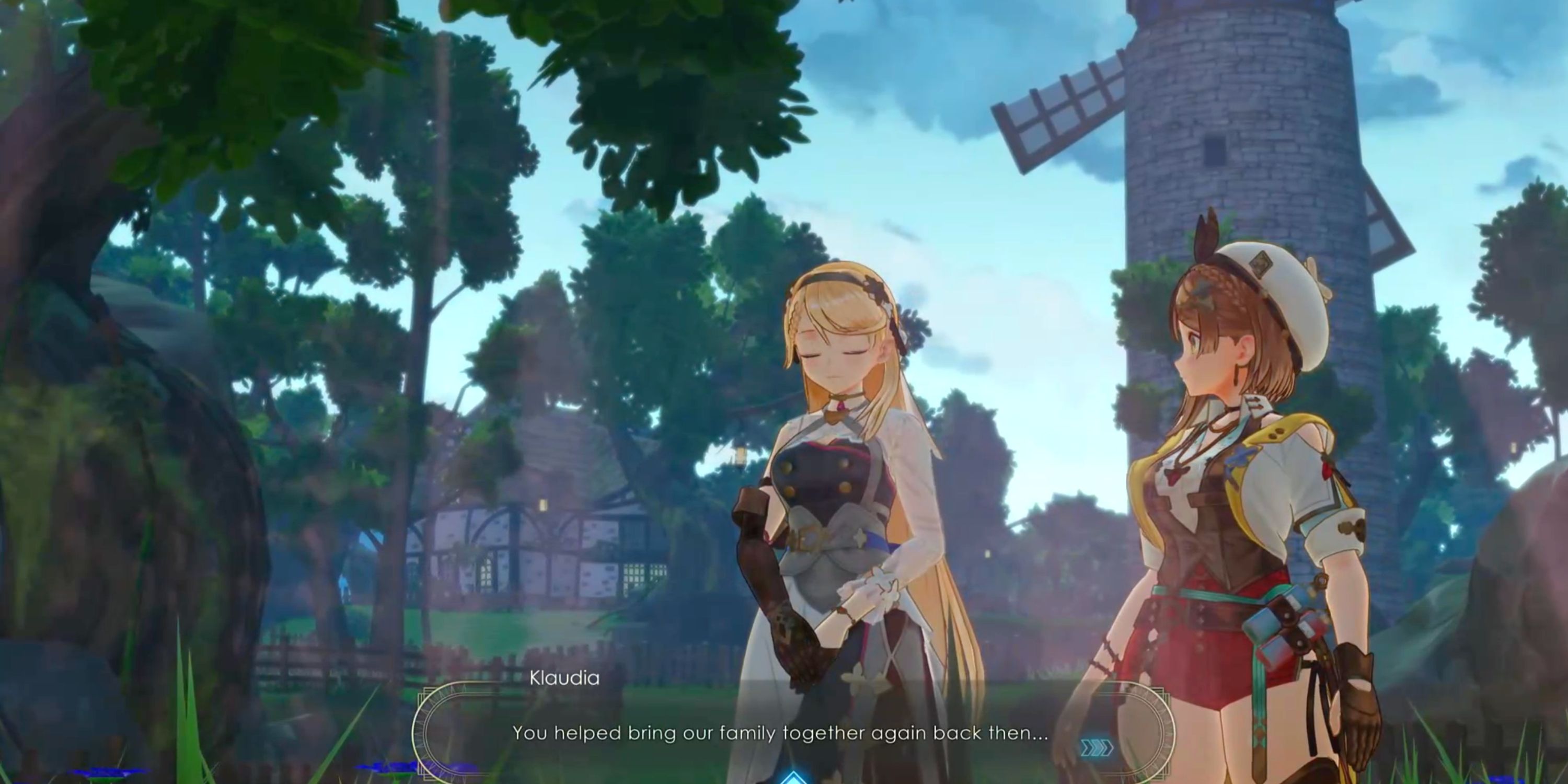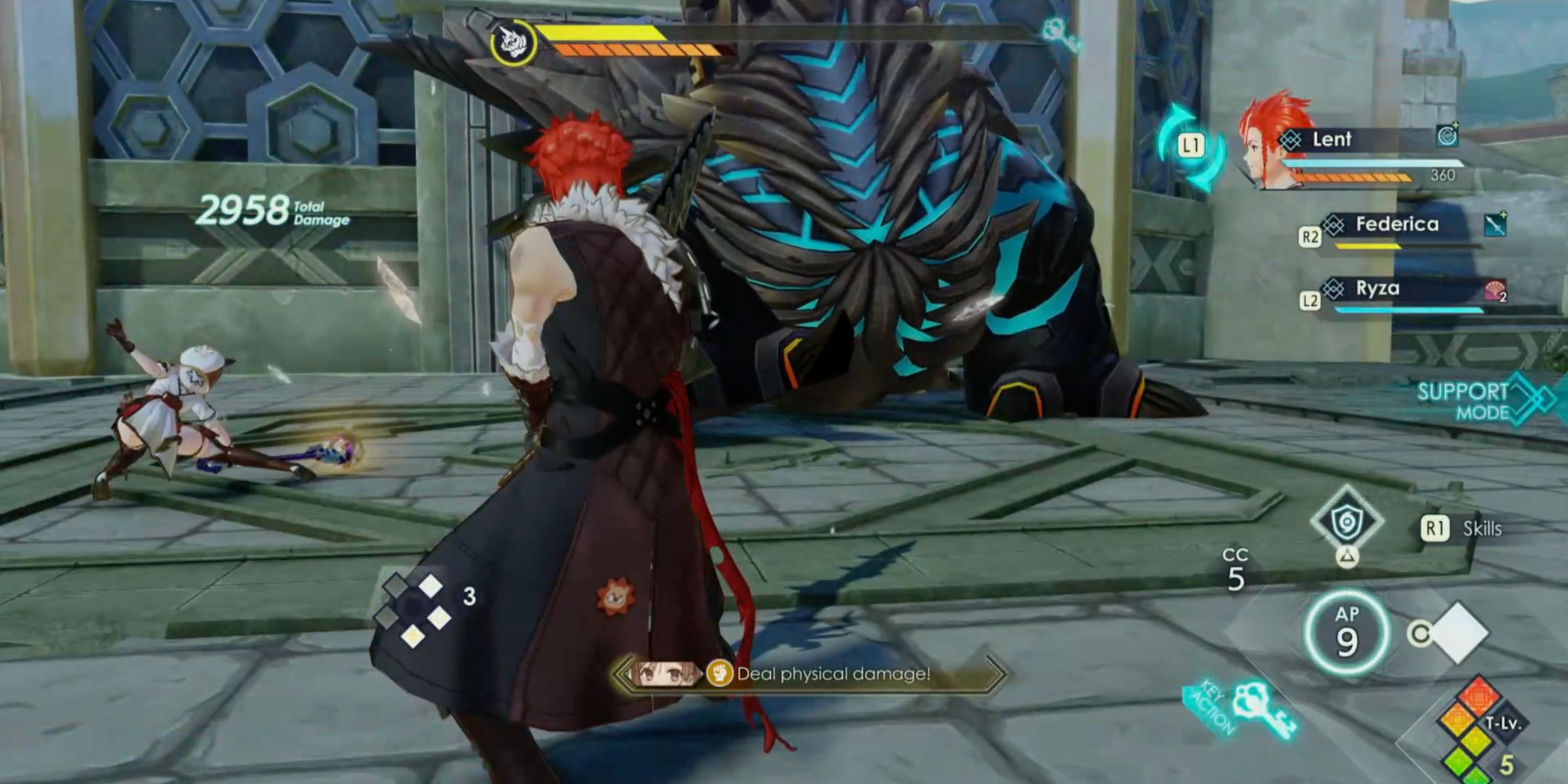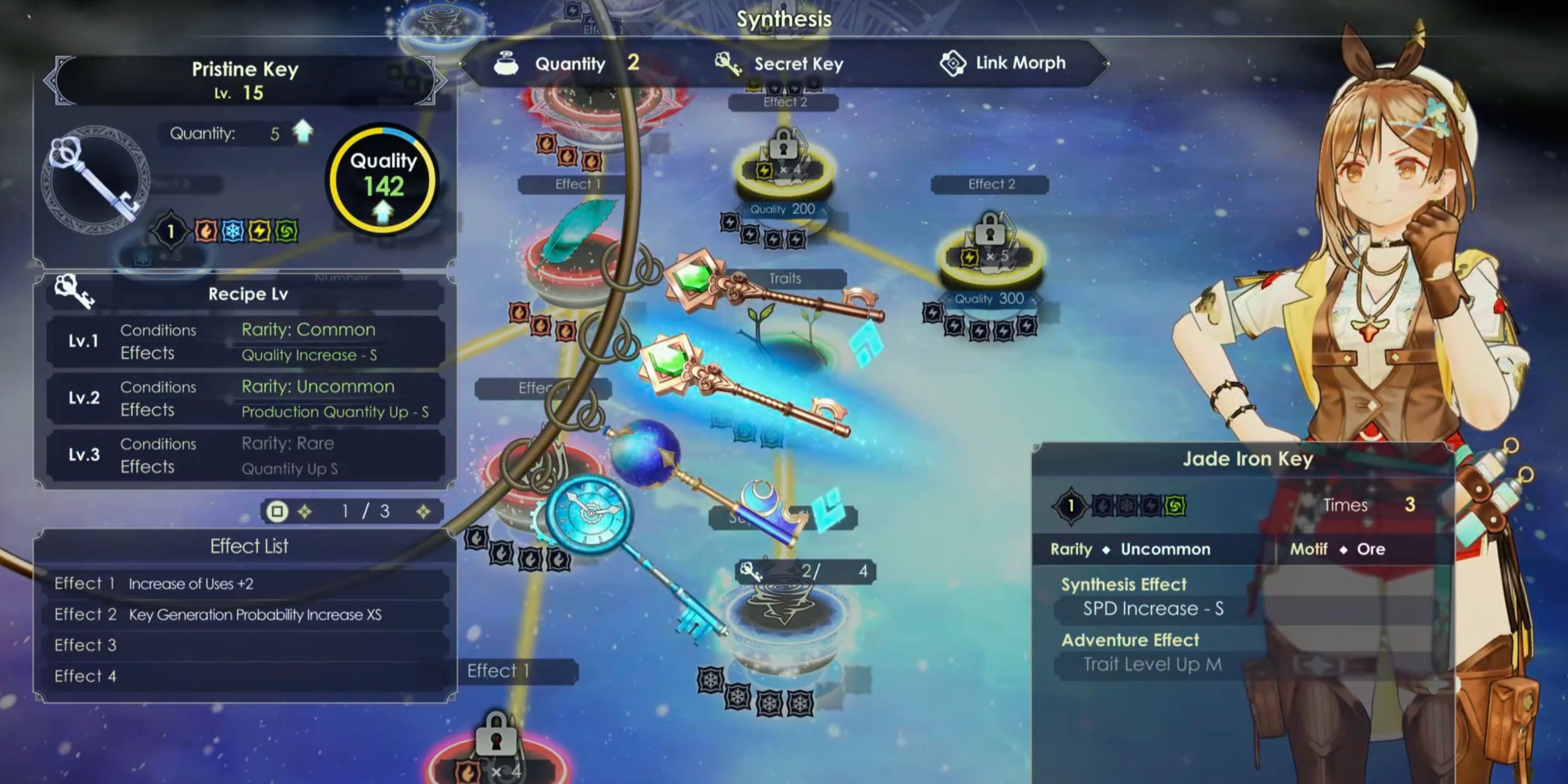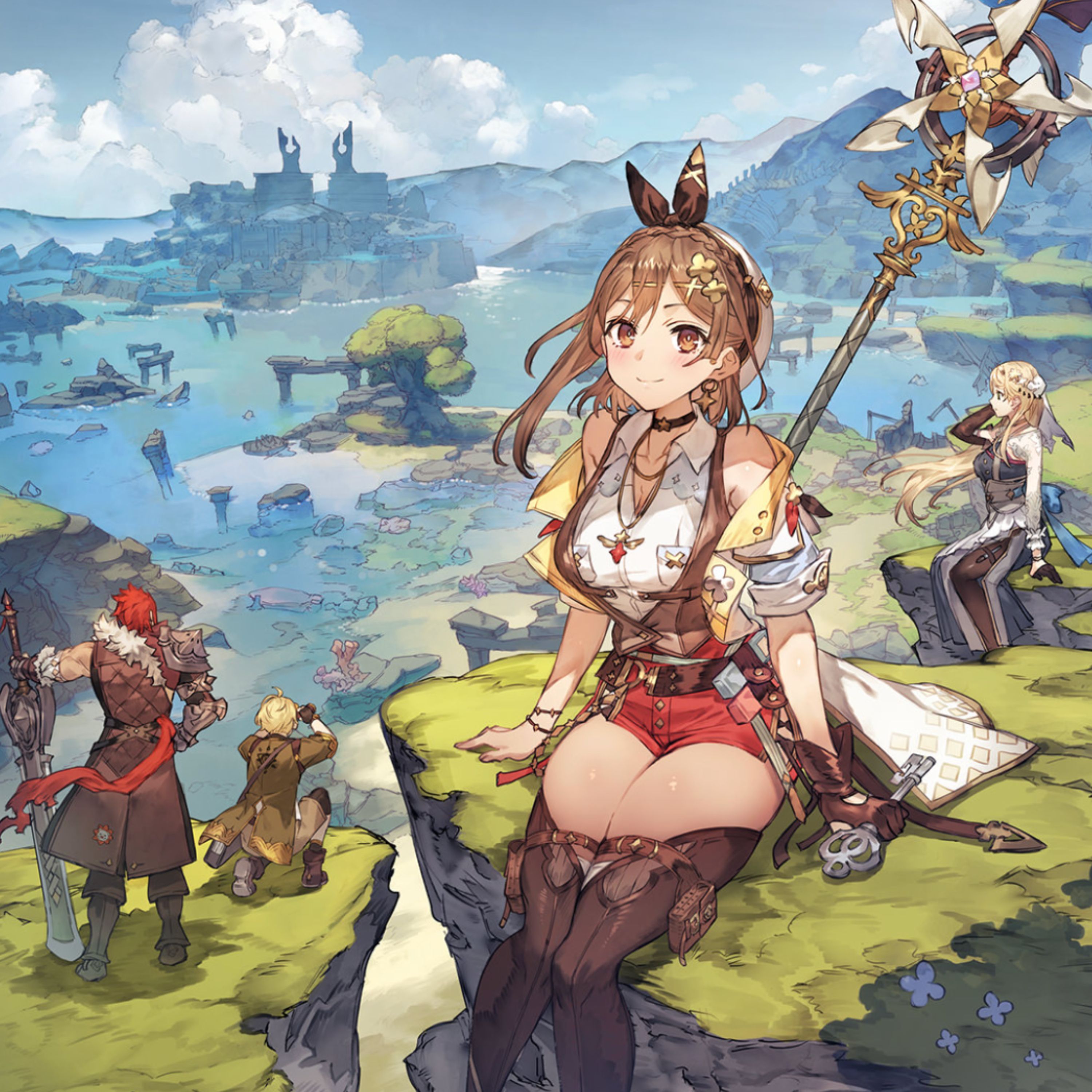
Atelier Ryza 3: Alchemist Of The End & The Secret Key
Reviewed On PS5
Atelier Ryza 3: Alchemist Of The End & The Secret Key closes out the final chapter of Ryza’s trilogy with a powerful send-off. The addictive gameplay loop and fine-tuned crafting system will keep you entertained for dozens of hours. It expands upon what worked well in the first two entries while setting the standard for future Atelier games to come. DualShockers was provided with a copy for the purposes of this review.
- Excellent character development
- Addicting exploration & crafting gameplay
- Gorgeous art style & animations
- Excessive dialogue moments
- Some gameplay imbalances
Since the late 1990s, the Atelier series has charmed gamers with its cheeky and well-written characters, complex storytelling, robust crafting systems, and undeniably cute aesthetics. In each entry, you play as a young alchemist who inadvertently finds themselves thrust into an epic adventure where they face larger-than-life challenges that can only be solved with alchemy and the power of friendship.
Although the series has been around for two and a half decades, it mostly went unnoticed by western audiences. That is until the latest protagonist - Ryza - made her big debut in 2019. Four years later, her story is coming to a close with the release of her third and final chapter, Alchemist of the End & the Secret Key. If you are new to Ryza's story, or just need a refresher since playing the prior games, you can quickly catch up by watching the prologue movie from the game’s home screen.
The story picks up about a year after the second game and begins with mysterious islands suddenly popping out of the sea, followed by a group of monsters attacking the nearby townsfolk. Ryza rushes in to save the day, and not long after, begins hearing voices speaking to her about the Code of the Universe. After doing some initial investigating and learning how to create the magical Secret Keys, Ryza uses them to harness the power of the Dragon Vein, an invisible river of otherworldly magic. The keys also play a big role in combat, synthesis, and exploration - giving each system another layer of complexity that was not present in the prior games.
The main story plays out over the course of 30 or so hours, but there are also another 60-70 hours of additional content available. For the bulk of the story, you’ll spend your time searching for clues about the ancient past, initially hitting dead end after dead end as you try to solve the mystery behind the newly emerged islands, and the fallout of the fallen Klint Kingdom. Most of the plot plays out in the dialogue between characters, which can make it feel more like you are reading a novel than playing a game. Veterans of the series will find this familiar and likely comforting, but if you are new to the Atelier games, be prepared to do a lot of reading.
Outside the main story dialogue, you’ll also spend a lot of time learning more about your companions. While all the characters seem mostly light-hearted and cheery on the outside, they each have their own darker, internal struggles that you get little glimpses into here and there. Lent plays the role of the simple-minded tank of the group, but that tough exterior is also a result of the upbringing he had from an abusive, alcoholic father. Claudia is sweet and caring, while secretly hiding the pain of her mother’s declining health. And Bos is cool, calm, and collected while shouldering the weight of responsibility that comes with his family name. Each character has a lot of depth which makes them feel surprisingly real and easy to fall in love with.
There are also a lot of dialogue moments that will automatically trigger as you are exploring new areas. They mostly consist of the characters reminiscing about something from their previous adventures, discussing their opinions on current dilemmas, or chatting about clothes or their favorite foods. Occasionally, this can be a little overwhelming, or even frustrating at times since these moments are often really hard to avoid. At one point, I was trying to make my way from one side of the town square to the next and was interrupted by three separate dialogue scenes, making what should have only taken a few seconds to reach my destination take five minutes. This was more prevalent when running around a new area, but nonetheless, it really took me out of the game, and I found myself fast-forwarding through dialogue I might have otherwise enjoyed had it been more spaced apart.
When you aren't lost in dialogue, you’ll spend a lot of your time exploring the vast regions in the game, filling your basket with the copious amounts of materials you gather. The world is massive, especially when compared to the prior games which mostly limited you to the areas surrounding Kirken Island or the capital. Although exploring much of the world is optional, it is easy to spend hours trekking down new paths while soaking in the game’s beauty. There are a lot of little improvements to the graphics and presentation that make the experience even more pleasant than before. For example, in previous games when entering a building, you’d select the door, and it would immediately cut to a loading screen. Now, there are small transitional scenes that make the experience feel more fluid and alive. Additionally, the graphics appear more fine-tuned. Each backdrop is rich with colorful detail, and the characters themselves look freshly polished.
While exploring the various areas in each region, you’ll encounter a slew of monsters to battle, each with unique variants based on the region you are in. Enemy level increases as you unlock new areas of the game, requiring you to come back prepared with better equipment. Combat is a real-time and turn-based hybrid, which keeps things fluid while avoiding a button-mashing sort of experience. As you attack the enemy with your basic move, you’ll gain AP (action points) that can be spent to use special abilities. Using special abilities grants CC (Core Charge) points which can be spent to use Core Items like bombs and recovery or buffing items.
In addition to the aforementioned battle mechanics, you can complete specific battle Action Orders. Do enough of them, and you’ll be able to perform a powerful Order Drive move that can do various types of damage to the enemy. For the longer battles, you’ll also slowly increase your Tactics Level and eventually be able to unleash an ultimate Fatal Drive move. The animations are wild and over the top, which makes you feel rewarded for all the actions you had to take to be able to unleash the move. As cool as these animations are, they ultimately felt a bit underpowered compared to some of the basic combat functions like using Core Items. However, it didn’t stop me from taking advantage of them whenever possible.
You can also fluidly change which character you are controlling in real-time, and swap out the reserve characters on the fly should you need their particular skills or assigned Core Items. I took the approach of decking out the active three characters with high-powered items and equipment so that I didn’t need to swap in reserve characters unless someone was KOd, and overall, this strategy worked well throughout my entire playthrough. However, there were times when fighting a particularly challenging enemy that having a well-equipped reserve character or implementing a new strategy was vital to being victorious.
After completing most of the main story in the Nemed Region, I stumbled into a graveyard of sorts, only to find myself squaring away with a large, partially corporeal boss that emerged suddenly from a portal. Having somewhat recently decked out my characters, I entered the fight ready to quickly demolish the boss like I was used to doing thus far. It turns out that I was severely under-prepared, and despite employing my most powerful attacks and strategies, I was getting KO'd in only a couple of hits. After failing multiple times, I headed back to the atelier and spent an hour or so creating new Core Items, armor, and weapons before heading back to the graveyard to settle the score. As the boss and my team exchanged blows, I could feel the fruits of my labor paying off. What was initially an impossible-to-win fight ended with me crushing the boss without breaking a sweat, proving just how amazing the power of alchemy can be.
After filling your basket with hundreds of ingredients and monster materials, you’ll head back to the atelier where you’ll spend countless hours synthesizing new items, tools, and gear. Outside the characters themselves, this is arguably the best part of the Atelier series, and how you’ll spend roughly half of your total playtime. There are over 150 recipes to learn, some of which are unlocked through synthesis, while others are unlocked via the skill tree. Each time you synthesize a recipe, you’ll fill out a series of material loops using harvested and synthesized ingredients. Ingredients have an elemental charge, number value, and a variety of traits you’ll need to consider as you are synthesizing. You are also able to use the newly added Secret Keys function to infuse additional bonuses to recipes, which keeps things feeling fresh for returning fans of the prior Ryza games. After playing through a few hours of the game and sinking some skill points into the skill tree, you’ll unlock the other types of synthesis - Item Rebuild and Item Duplication. The former lets you go back and rework an already crafted item to maximize its effectiveness, while the latter helps you save time by duplicating high-quality crafted materials.
While all of these crafting elements can be a lot to get used to at first, the game does a great job of slowly introducing you to each of the features to avoid overwhelming you. Atelier Ryza 3's crafting systems keep with the series' best-in-class standard — Gust clearly didn't fix what wasn't broken here, but the addition of the Secret Keys functionality elevates an already-satisfying series staple to new heights. The granular control you have over how well-tuned items are to your playstyle invites a nearly obsessive perfectionism to kitting out your characters, and personally, I could easily lose a day doing it.
In addition to all the Secret Keys functionality that has been incorporated into the core mechanics of the game, you can now build a separate Atelier in each region you visit, customize its parameters, and decorate it with countless cosmetics. This makes returning to each one a unique experience and is yet another way to sink tens of hours into the game if you are so inclined. There are also an infinite number of Random Quests that will pop up as you explore the world now, which means there is something to engage with around every corner. These are a nice way to earn easy skill points, money, or materials as you explore. But after spending a dozen or so hours running around the open world, you might end up mostly ignoring them due to their high frequency and relatively low-value payout.
The team at Gust did a great job of taking all the elements that worked in the prior two games and adding to them. Sometimes these new features are too frequently thrown at you or are not highly valuable to engage with, such as the excessive dialogue moments or Random Quests. Still, the added layer of detail and complexity they bring to the game just makes the overall experience feel that much more robust. As I watched the countless interactions between Ryza and her friends, it reminded me of who they were at the beginning of the trilogy, and how different they are now. It is truly charming to see them all grow up and come into themselves over the course of the three games. By the time the credits finally rolled, I was sad to know this was the last time I’d see them all, while still feeling a sense of closure to their story.

